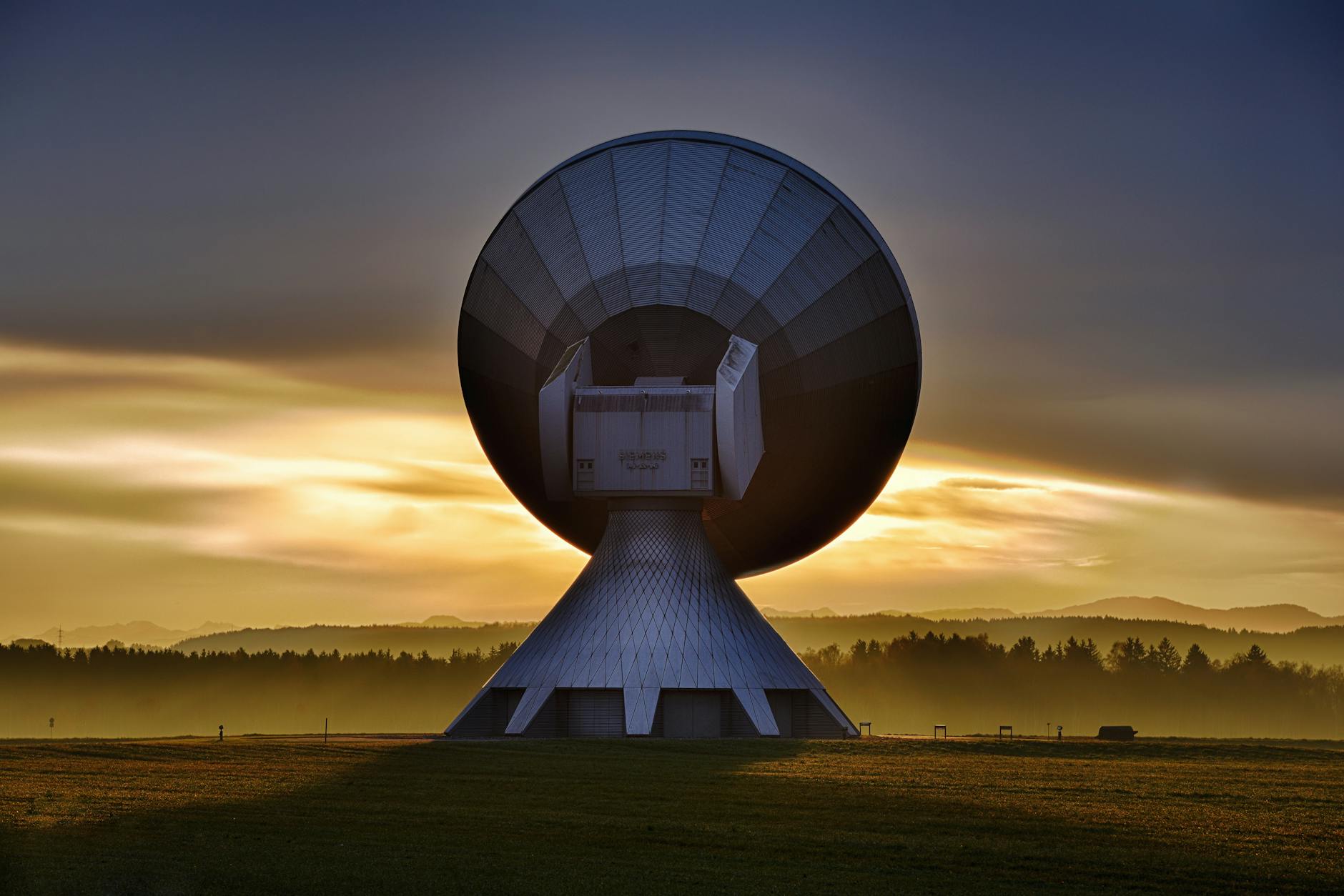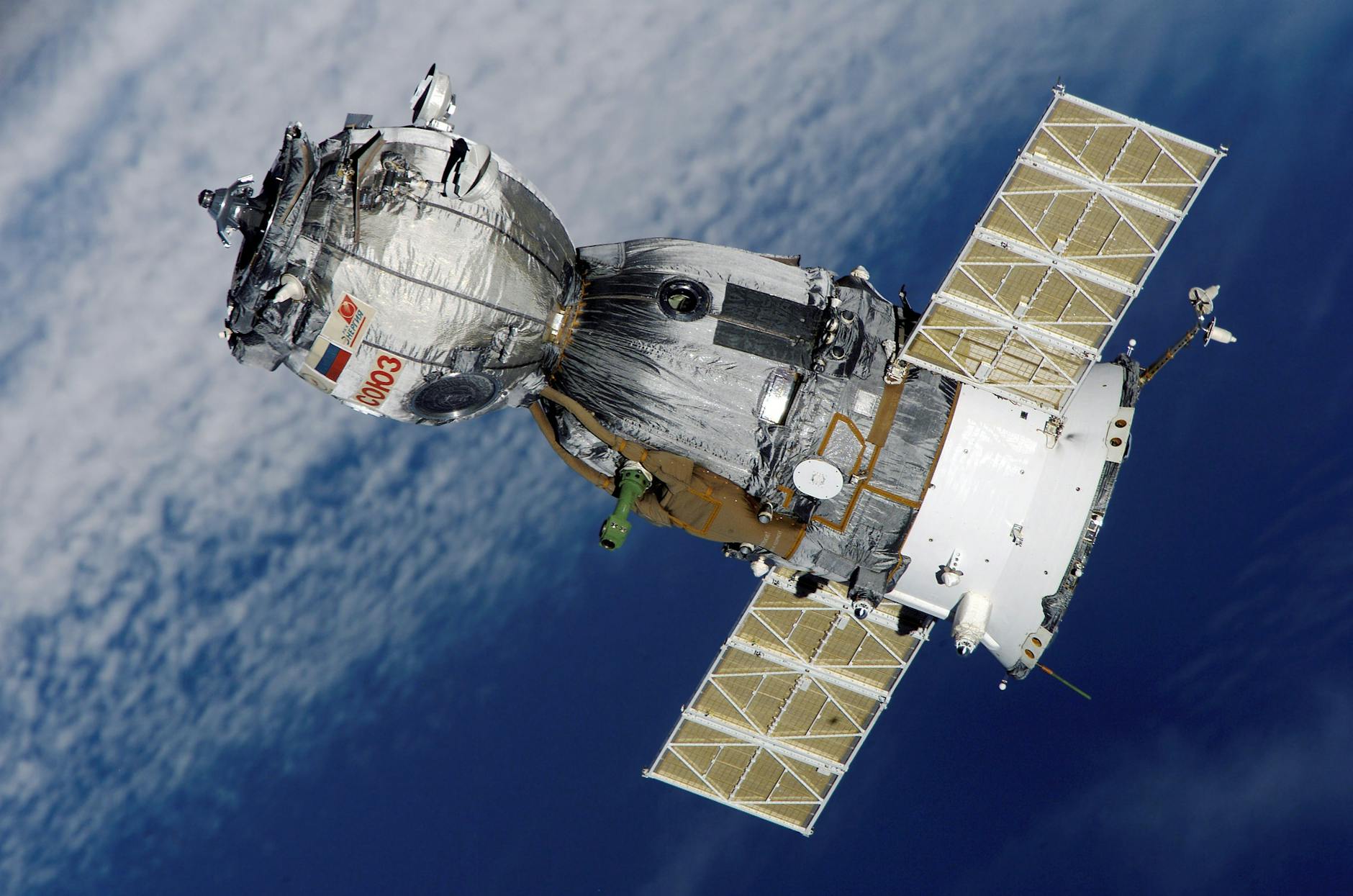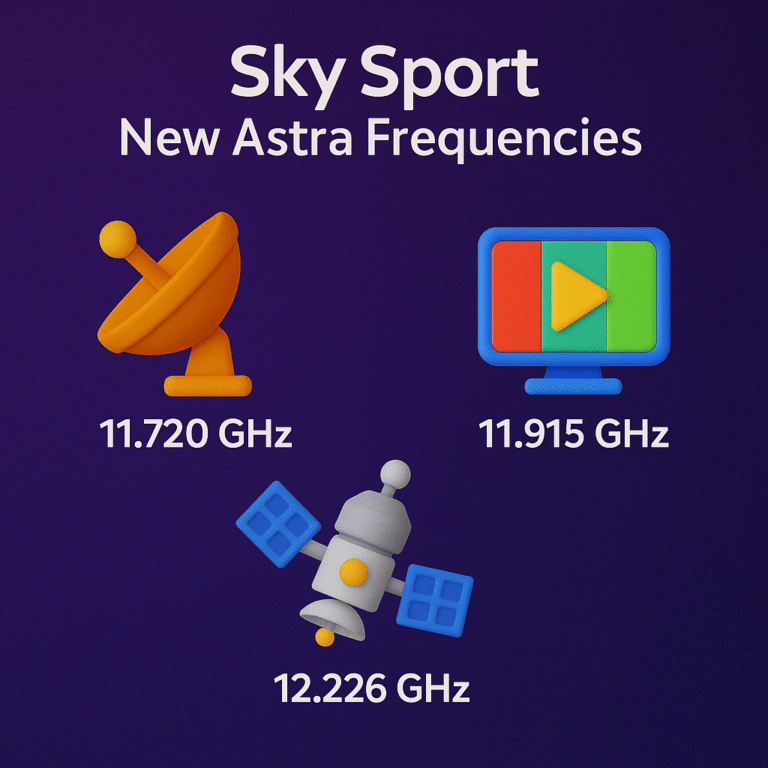
How Starlink and LEO Satellites Are Transforming Satellite Broadcasting Today
Satellite broadcasting has long relied on large, geostationary satellites positioned far above Earth. This setup has served us well but comes with limits like signal delays and narrow coverage areas. Now, Starlink and other Low Earth Orbit (LEO) satellites are changing the game by orbiting much closer to the planet.
This shift cuts down signal lag and broadens access, opening new doors for satellite TV, internet, and live broadcasts. The impact is significant, reshaping how content reaches viewers and boosting service quality worldwide. Understanding these changes helps us see where satellite broadcasting is headed next.
Understanding Starlink and LEO Satellites
To grasp how satellite broadcasting is changing, we need to understand Starlink and the role of Low Earth Orbit (LEO) satellites. These technologies offer fresh solutions to common satellite issues like delay and limited reach. Let’s break down what Starlink is, what makes LEO satellites different, and why they’re shaking up the traditional satellite setup.
Starlink: An Overview
Starlink is a satellite internet network launched by SpaceX, the aerospace company founded by Elon Musk. Its goal is straightforward: provide fast, reliable internet to hard-to-reach areas around the globe. Instead of relying on cables, Starlink beams internet signals directly from space.
The current constellation includes thousands of small satellites orbiting Earth at roughly 550 km (340 miles) above the surface. This is much closer than traditional satellites, which orbit much higher. Starlink continuously launches more satellites to improve coverage and speed, aiming for global availability.

Photo by SpaceX
Characteristics of Low Earth Orbit Satellites
LEO satellites orbit much closer to the Earth than geostationary satellites. This proximity offers clear benefits for broadcasting:
- Lower latency: The shorter distance means signals take less time to travel back and forth. That translates to quicker response times and better experiences for live broadcasts or video calls.
- Improved signal strength: Being closer reduces the chance of signal loss or interference caused by Earth’s atmosphere.
- Broad coverage: Networks of many LEO satellites can cover nearly every spot on the planet, even remote regions where cables or towers don’t reach.
- Flexibility in deployment: Smaller satellites are easier and cheaper to build and launch in large groups.
At the same time, LEO satellites face challenges. They move quickly relative to the planet’s surface, so satellite networks need to “hand off” connections between satellites frequently. This requires sophisticated tracking and switching technologies.
Comparison with Geostationary Satellites
Traditional geostationary satellites orbit much higher—about 35,786 km (22,236 miles) above Earth—and match the planet’s rotation, staying fixed over one location. This offers some advantages but creates clear trade-offs compared to LEO satellites:
| Feature | LEO Satellites | Geostationary Satellites |
|---|---|---|
| Orbit Height | ~550 km above Earth | ~35,786 km above Earth |
| Latency | 20-40 milliseconds | 600+ milliseconds |
| Coverage | Global, through constellation networks | Fixed, limited to specific regions |
| Cost | Lower individual satellite cost, but requires many | Higher cost per satellite, fewer needed |
| Deployment Speed | Faster, smaller satellites launch often | Slower, larger satellites launch less frequently |
LEO satellites feel more like a swarm, working together to cover the globe. Geostationary satellites act like fixed towers watching a single area from afar. The low orbit of LEO systems gives them a clear edge on speed and coverage, especially for services that need quick data delivery.
This shift in satellite design explains why Starlink and similar LEO constellations are transforming what satellite broadcasting can offer.
Impact on Satellite Broadcasting Technology
Starlink and other LEO satellite constellations are pushing satellite broadcasting technology forward in ways that traditional systems can’t match. By moving closer to Earth, these satellites tackle long-standing problems like delay and limited reach, while unlocking fresh possibilities for how broadcasters deliver content. The changes ripple across latency, coverage, and bandwidth—each shaping a new broadcasting experience.
Reduction in Latency and Its Benefits
Latency, or the delay between sending and receiving a signal, has been a major roadblock for satellite broadcasts. GEO satellites, orbiting tens of thousands of kilometers away, cause delays noticeable in live streaming and interactive content. LEO satellites like Starlink orbit just a few hundred kilometers above the Earth, cutting latency from hundreds of milliseconds to under 40 milliseconds.
This drop in delay greatly improves broadcast quality. For example:
- Live sports or events stream with less lag, making the experience feel real-time.
- Two-way interactions during broadcasts become smoother, enabling live polls, chats, or remote guest appearances.
- Remote production teams can coordinate better, editing and switching content faster.
Lower latency transforms satellite broadcasting from a one-way push of content to a dynamic conversation with audiences worldwide.

Photo by Pixabay
Enhanced Coverage and Accessibility
One of the most exciting impacts of LEO satellites is how they reach places that traditional satellites miss. GEO satellites cover wide areas but can’t serve every remote corner, especially rugged or isolated regions. LEO constellations fly closer and work as a network of small satellites, distributing signals across the globe.
Here’s what that means:
- Rural and remote areas once stuck with poor or no broadcast signals can now receive clear satellite TV and internet.
- Disaster zones or temporary setups gain quick access to live broadcasting channels without requiring ground infrastructure.
- Global audiences get a consistent satellite signal, bridging the digital divide and expanding markets for broadcasters.
This wider reach opens doors to new viewers and fresh revenue streams, all while offering more people access to vital information and entertainment.
Improvements in Bandwidth and Speed
Bandwidth determines how much data can flow through a satellite link at once. LEO satellites carry this further by providing higher bandwidth and faster speeds compared to older systems. Starlink’s network, for instance, supports broadband-quality data rates, which impact broadcast signals in several ways:
- Sharper video quality, supporting HD or even 4K broadcasts over satellite without buffering frustrations.
- Faster uploads and downloads for broadcasters sending live feeds from the field.
- More channels and services packaged into the same satellite stream thanks to better compression and speed.
Together, these improvements mean satellite broadcasting no longer has to settle for lower resolution or compressed content. Instead, viewers enjoy smooth, crisp streams and broadcasters can innovate with richer, more engaging content formats.
Economic and Market Implications for Broadcasters
As Starlink and other LEO satellite systems take off, they’re reshaping the business side of satellite broadcasting. Broadcasters see shifts not only in technology but in how they operate and earn revenue. These networks are cutting costs, opening new avenues for content delivery, and creating a more competitive market atmosphere. That mix is changing the financial and strategic game for everyone involved.
Cost Efficiency and Infrastructure Changes
LEO satellites bring clear savings for broadcasters, mainly by simplifying infrastructure and lowering upfront expenses. Traditional geostationary satellites demand costly ground stations with big antennas and complex equipment. These require maintenance and upgrades, driving ongoing costs higher.
With LEO networks, broadcasters can rely on smaller, fewer ground stations thanks to the satellites’ closer orbits and dense coverage. This results in:
- Reduced capital expenses for ground infrastructure and hardware.
- Lower maintenance costs since fewer large antennas are needed.
- Decreased satellite construction and launch costs because LEO satellites are smaller and cheaper.
- Faster deployment enables broadcasters to expand or adjust coverage quickly without spending heavily.
The combined effect means broadcasters can bring services online at lower costs and scale operations more flexibly. This cost advantage is especially important when entering emerging or rural markets where budgets are tight.

Photo by Sachin Kumar Wadhwa
New Opportunities for Broadcasters and Content Providers
The rise of LEO satellites pushes broadcasters to rethink content delivery and revenue models. Instead of just sending linear TV or radio feeds, broadcasters can develop services that take advantage of the lower latency and broader reach these satellites offer.
Opportunities include:
- Direct-to-consumer streaming in regions without reliable internet or cable.
- Interactive content that relies on low delay, such as live polling or viewer participation during broadcasts.
- On-demand content delivery, enabling audiences to access shows or events anywhere, anytime.
- New partnership models with internet service providers or content platforms to bundle satellite-based offerings.
- Niche market coverage like maritime, aviation, or remote communities that require constant connectivity.
These options create fresh revenue streams beyond traditional advertising and subscription fees. For example, broadcasters can charge for premium access in underserved areas or sell data services aligned with streaming content. The flexibility also encourages innovation in content formats and customer engagement.
Challenges and Competition in the Broadcasting Space
While the benefits are clear, LEO satellite networks also bring hurdles that broadcasters must handle carefully.
- Spectrum Management
The rise of numerous LEO satellites increases demand for radio frequencies. Coordinating spectrum use worldwide is tricky and risks interference without clear rules and technology coordination. - Market Competition
The barrier to entry is lower with cheaper satellites, leading to many players competing in the same space. Broadcasters face pressure to differentiate offerings and maintain profitability amid tighter margins. - Regulatory Issues
Broadcast licenses, international treaties, and national regulations on satellite transmissions create barriers. Navigating diverse policies across countries requires legal effort and may limit rollout speed. - Network Coordination
LEO satellites move fast, meaning broadcasters must adapt to handoffs between satellites without dropping signals. This calls for advanced network management tools and ongoing investment.
These challenges push broadcasters to be more strategic, working closely with regulators and technology providers. The result is a broadcasting environment that’s dynamic, competitive, and demands constant adaptation to keep pace.
By trimming costs, opening new business ideas, and presenting fresh challenges, LEO satellite technology is rewriting the economic rules for satellite broadcasters.
Future Trends and Innovations in Satellite Broadcasting
As Starlink and other LEO satellite networks continue to grow, they’re laying the groundwork for some exciting changes in satellite broadcasting. These advancements are not just about faster internet or better coverage but about reshaping the tools and partnerships that deliver content globally. Let’s look at some key innovations on the horizon, how satellites will work with emerging networks like 5G, and what the industry might look like in the next decade.
Next-Generation Satellite Technologies
The technology powering satellites is shifting rapidly, and the future will see smarter, sharper tools helping broadcasters reach viewers more efficiently. Three major trends stand out:
- Advanced Phased Array Antennas: These antennas can steer beams electronically without moving parts. This ability allows satellites and ground stations to track multiple connections at once and switch quickly between signals. Phased arrays improve reliability and reduce the chance of dropped broadcasts, especially as satellites move fast around Earth.
- AI-Driven Network Optimization: Artificial intelligence will help satellites manage their connections in real time. AI can predict traffic, adjust bandwidth to match demand, and optimize routing. This means broadcasts can stay smooth even during peak times or complicated network handoffs.
- Satellite Miniaturization and Modular Designs: Satellites are getting smaller but more powerful. Mini-satellites reduce launch costs and allow companies to deploy clusters instead of single massive satellites. Modular designs also make it easier to upgrade or replace parts, keeping networks fresh and flexible.
Together, these technologies will make satellite broadcasting more responsive and adaptive. Broadcasters can deliver content faster and better while lowering the complexity of their infrastructure.

Photo by Pixabay
Integration with 5G and Terrestrial Networks
The future won’t separate satellites from terrestrial networks—instead, they’ll work as a team. LEO satellites will support 5G and land-based infrastructure by filling in coverage gaps and extending global reach.
Some ways this integration will play out:
- Extended Coverage for 5G: Satellites can bring 5G-level speeds to remote, rural, or underserved areas where building towers isn’t practical. This helps close digital divides and expands broadcast audiences.
- Network Load Balancing: During big events or emergencies, terrestrial networks get busy. Satellites can offload some of that traffic or provide backup, ensuring broadcasts stay uninterrupted.
- Hybrid Devices and Networks: Devices that switch between satellite and 5G signals automatically will emerge, letting users roam anywhere without losing connection. Broadcasters can then reach viewers on any device, anywhere on the planet.
This blending of technologies promises broadcasts that feel more natural and continuous, no matter where viewers are or what devices they use.
Predicted Industry Transformations by 2030
Looking toward 2030, several shifts in satellite broadcasting are likely as LEO networks like Starlink mature and new players enter the market.
- More Personalized Broadcasting: Lower costs and better networks will let broadcasters offer more tailored content. Think region-specific news, language options, or custom sports feeds delivered directly via satellite.
- Rise of New Platforms and Services: Satellite broadcasting could expand beyond TV and radio into interactive experiences, virtual reality, or on-demand video streaming everywhere—even in the most remote locations.
- Smarter Network Management: AI and automation will handle most technical operations behind the scenes, making satellite broadcasting more reliable and less expensive. Broadcasters will focus more on content and less on infrastructure.
- Greater Competition, Lower Barriers: The cost to launch satellites will keep dropping, inviting new companies and niches into the market. This will drive innovation but also require broadcasters to differentiate their offerings.
- Environmental and Regulatory Focus: As satellite numbers rise, so will concerns about space debris and spectrum use. Responsible practices and new regulations will shape how companies design and operate their systems.
By 2030, satellite broadcasting may look very different from today, offering faster, richer, and truly global access. The advances we see now are setting the stage for a broadcasting world without borders.
Conclusion
Starlink and LEO satellites are shifting satellite broadcasting in important ways. They bring faster connections, wider reach, and lower costs that unlock new possibilities for broadcasters and viewers alike. This shift is not just about better technology—it’s changing how content is delivered and who can access it.
Keeping an eye on these developments helps you understand the future of broadcasting and spot new opportunities as they arise. As the satellite ecosystem grows, staying informed will let you take full advantage of the changes shaping global communications today and tomorrow. Thank you for reading—feel free to share your thoughts on how satellite broadcasting is evolving.






